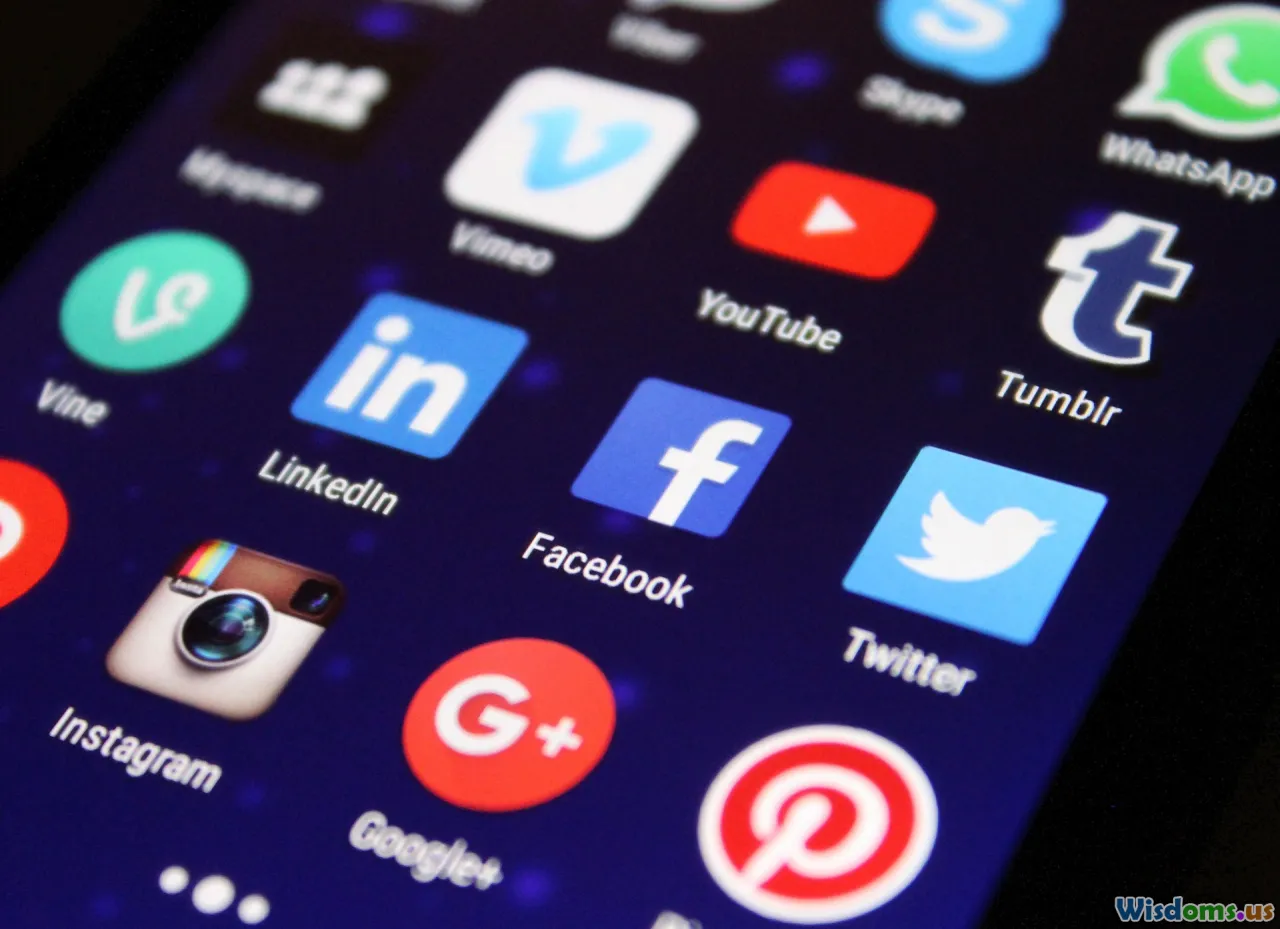
Is Narcissism on the Rise Among Young Adults
12 min read Explore data, theories, and cultural factors driving perceptions of rising narcissism among young adults. (0 Reviews)
Is Narcissism on the Rise Among Young Adults?
Narcissism has become a frequent talking point in today’s conversations about mental health, popular culture, and social trends—especially when discussing young adults. Is a genuine surge occurring, or are we misreading generational change? Peeling away headlines and hot takes, let’s explore what’s really happening, separating fact from folklore as we analyze narcissism among today's younger generations.
The Basics: Understanding Narcissism

Before examining whether narcissism is rising among young adults, it’s crucial to define the term. Narcissism, in psychology, refers to excessive self-focus, an inflated sense of one’s own importance, and a deep need for admiration. It exists on both a personality trait continuum and, in more severe cases, as a clinical disorder (narcissistic personality disorder, or NPD).
Trait vs. Disorder
Most of the public debate centers around trait narcissism—aspects of personality like vanity, entitlement, and self-promotion. By contrast, narcissistic personality disorder is much rarer and requires a clinical diagnosis. According to the DSM-5, about 0.5–1% of the general population has NPD, with no evidence of significant increases over recent decades.
Key Characteristics and Examples
Some core signs of narcissism include:
- Grandiose sense of self-importance
- Preoccupation with fantasies of ideal love or success
- Belief in being special or unique
- Need for excessive admiration
- Exploitative behavior and lack of empathy
Example: A university student who consistently dominates group discussions, disregards peers' perspectives, and responds to critique with outrage or dismissiveness—that’s an illustration of trait narcissism in action.
A Look at the Numbers: Fact or Folklore?

The claim that narcissism is on the rise, especially among Millennials and Gen Z, stems largely from interpretations of research since the early 2000s.
The Narcissism Epidemic Debate
Jean Twenge and W. Keith Campbell’s influential 2009 book, “The Narcissism Epidemic,” asserted that narcissism scores among college students in the United States had risen sharply since the 1980s. Their work was largely based on the Narcissistic Personality Inventory (NPI). Data showed average NPI scores increased from the early 1980s to the mid-2000s, fuelling media reports of a looming crisis.
But subsequent studies have challenged this trend:
- A 2010 meta-analysis covering over 16,000 American college students from 1992–2007 found only negligible changes in average narcissism levels.
- For high school students, the Monitoring the Future longitudinal study found no clear evidence of growing narcissistic traits. Self-esteem trended up, but not narcissism per se.
- International studies are even less conclusive. A 2018 European study of young adults reported stable narcissism rates since the 1990s, despite rising social media use and cultural shifts.
Bottom line: The claim that narcissism is spiraling out of control among today’s youth is hotly debated—and the aggregate data remain ambiguous at best.
Social Media’s Role: Mirror or Megaphone?

Many observers argue that the explosion of social media has encouraged vanity, self-promotion, and performance culture—leading to increased narcissism. How justified is this?
Perception Versus Reality
On platforms like Instagram, TikTok, and Snapchat, young adults routinely document their daily lives, often curating idealized versions. The prevalence of selfies, influencers, and personal branding makes it easy to equate these behaviors with narcissism.
However, research offers a nuanced story:
- Selfie frequency is only weakly correlated with NPI narcissism scores.
- Motives matter: Some post for connection with friends; others for validation. Not all are driven by self-obsession.
- Social anxiety: Many young adults are more self-conscious rather than narcissistic, curating posts to avoid negative judgment.
Consider an example: Anna posts flawlessly filtered images on Instagram, updating her story daily. Is this narcissism, or contemporary digital self-expression? Studies suggest that intent and context matter far more than the mere act of sharing online.
New Norms, Old Traits
Social media is a stage amplifying normal human desires for attention and belonging—not a uniquely narcissistic temptation.
Cultural Shifts and Generational Context

To fairly assess claims about rising narcissism, we need cultural context. What were norms of self-expression in prior generations?
Shifting Values
- Self-esteem movement: Since the 1970s, Western education and parenting have increasingly encouraged children to "love themselves."
- Individualism: Surveys show Gen Z and Millennials place high value on authenticity, self-care, and "being true to oneself." While this leads to more visible personal expression, it doesn’t necessarily equal narcissism.
Changing Measures
What’s labeled narcissism today might have been called self-confidence in earlier eras. Norman Mailer, Andy Warhol, and other 20th-century figures displayed many "narcissistic" traits long before iPhones and TikTok.
Case in point: Baby Boomers in the 1960s embraced slogans like "do your own thing" and celebrated rebellion against social conformity—behaviors that could easily be pegged as narcissistic by today’s standards.
Consequences: Real-Life Impact or Media Hype?

If narcissism is genuinely increasing among young adults, it should show up in behavior—affecting everything from interpersonal relationships to work environments.
Relationships
Therapists report that entitlement and lack of empathy can be barriers to meaningful connection among clients of all ages. Ghosting, breadcrumbing, and toxic relationship patterns certainly exist, but rates of close friendship and romantic satisfaction among Gen Z are not clearly lower than past cohorts.
Workplace
Studies show some employers notice an uptick in young workers who expect rapid advancement and high praise. But is this narcissism, or adaptation to a highly competitive, anxious job market? Generational experts argue many organizations are encountering young adults unusually upfront about their needs—mistaken for arrogance, but often realism.
Mental Health
While rates of anxiety, depression, and other struggles have increased among young adults, these are not symptoms of narcissism. If anything, researchers note a rise in vulnerability and help-seeking—not traits typical of narcissists.
Diagnosing the Persistent Stereotype

Why does the narcissism label stick stubbornly to today’s young adults?
Intergenerational Dynamics
Every generation tends to view the next as self-absorbed and directionless—a phenomenon as old as civilization. Socrates famously groused about the youth of Athens. The "me decade" scolded the young adults of the 1970s; in the 1990s Gen X was called apathetic and self-involved. Today, with new technology catalyzing transparency and self-expression, the same criticisms resurface.
The Role of Media
A flood of think pieces, headlines, and TV experts have amplified the “narcissism epidemic” storyline in the past two decades. Fear sells: public worries about technology, generational decline, and changing social mores often cluster under simple but sticky labels like ‘narcissism.’
Towards a Balanced Perspective and Actionable Advice

Rather than binaries (“narcissistic” or “not”), personality exists as a spectrum. Youthful self-consciousness, ambition, and digital self-presentation are not always illnesses in need of a cure. Here’s how to foster healthy self-regard in a selfie-saturated, competitive world:
1. Focus on Mindful Self-Awareness
Encourage young adults to reflect authentically:
- Journaling about personal growth
- Practicing gratitude and noticing others’ contributions
- Regular digital detoxes to check emotional motives for sharing
2. Build Empathy Muscles
Narcissism shrinks when empathy grows. Concrete strategies include:
- Volunteering to cultivate perspective
- Practicing active listening—not interrupting, asking open questions
- Seeking feedback and learning from criticism
3. Model Healthy Confidence
Parents, educators, and mentors can:
- Praise effort and resilience, not just outcomes
- Share their own mistakes and lessons, demonstrating humility
- Avoid extremes of overindulgence or excessive shaming
4. Seek Professional Support for Extremes
When self-absorption leads to harm (isolation, ruined relationships, emotional distress), consulting psychologists or counselors is wise. Early intervention, especially with evidence-based therapies like CBT, can redirect unhealthy patterns.
What the Future Holds

Today’s young adults face unique pressures: gig economies, student debt, the perpetual spotlight of online life. Some will struggle with self-importance; most are navigating identity and connection in evolving ways. Personality shifts are slow-moving phenomena—shaped by history, environment, and innovation.
We need care—and nuance—when diagnosing vast generations or complex minds. Simply labeling young adults as ‘narcissistic’ flattens a rich, evolving story of growth, challenge, and adaptation. In reality, most young people balance digital presence with real-world connection, wrestling with insecurity, ambition, and the perennial challenge: discovering and expressing who they truly are.
Today’s concerns about narcissism may signal not a societal decline, but a poignant desire for meaning and authenticity in a rapidly changing world. By fostering empathy, self-awareness, and genuine community, we can cultivate healthier generations—and reshape the narrative, together.
Rate the Post
User Reviews
Popular Posts

















